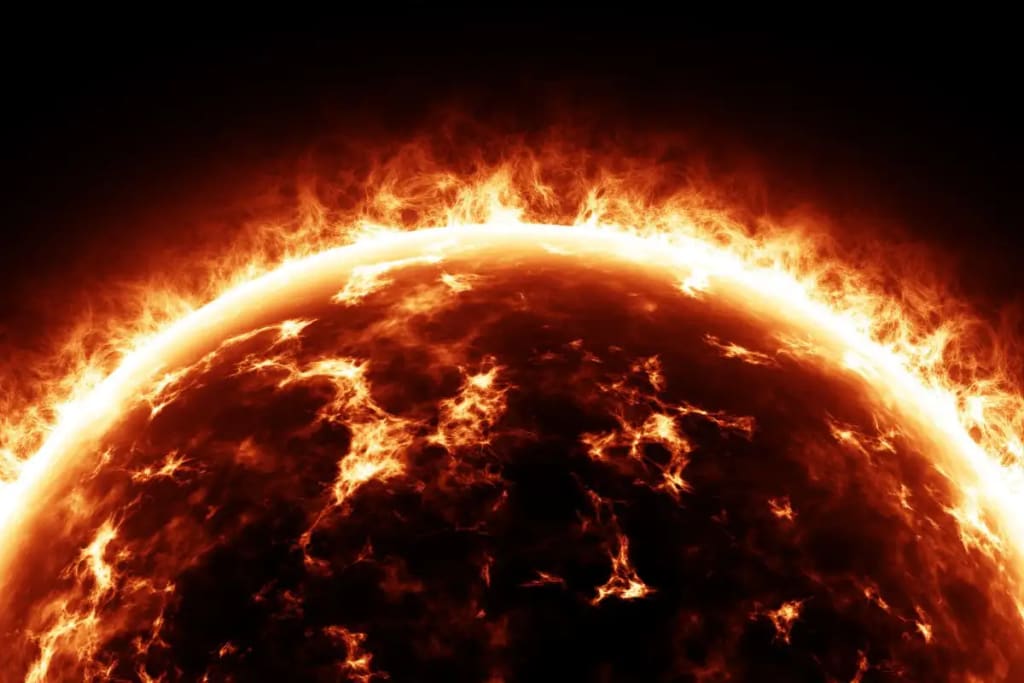
From our vantage point, the sun appears calm and peaceful. However, like humans and the entire living world, the sun also has its own phases of activity, varying in intensity. The repercussions of these phases are much larger and more chaotic when the sun becomes hyperactive. Let's take a closer look at what unfolds up there.
Scientists measure the sun's activity by counting sunspots on its surface. Sunspots are dark patches that form when the sun's magnetic field becomes entangled. It's a simple concept: the more sunspots, the more active the sun. Lately, it seems that the sun has been partying like crazy. The number of sunspots observed is the highest in nearly 21 years. In June, 163 sunspots appeared on the sun's surface, marking the highest count since September 2002 when there were 187 spots. This frenzy is edging towards its peak, an event known as solar maximum.
But how does all this occur? At certain points, the sun's magnetic field, which is initially strong and organized, becomes entangled, resembling a tightly wound ball of rubber bands. Consequently, plasma rises from the surface and forms loops, resulting in the formation of solar flares and coronal mass ejections (CMEs). In the latter, plasma in the sun's upper atmosphere, termed the corona, becomes highly unstable and emits powerful bursts of energy. Eventually, the tangled ball of magnetic fields snaps, completely flipping and reversing the sun's North and South Poles. This phenomenon repeats roughly every 11 years. During this highly active phase, the sun emits hot blobs of plasma, develops large dark spots comparable in size to planets, and releases potent eruptions of energy and radiation.
Another fascinating occurrence during the sun's heightened activity is the plasma waterfall, or polar crown prominence (PCP). This mini-eruption starts on the sun, attempting to escape but is pulled back by the sun's magnetic field before it can venture into space. The plasma waterfall reaches staggering heights of up to 62,000 miles above the surface, equivalent to stacking eight Earths on top of each other. Additionally, a phenomenon referred to as a polar vortex occurs—a massive halo of rotating plasma surrounding the sun's North Pole at high speeds. This vortex materializes when a large section of plasma snaps and falls back towards the surface, akin to the formation of a plasma waterfall. Scientists are still uncertain why this plasma remains above the sun's surface for extended periods.
Among the intriguing examples of CMEs is a colossal butterfly-shaped eruption observed in March of this year. This unique shape was a result of the explosion occurring on the side of the sun that was not visible to us. Unfortunately, its strength could not be accurately measured. Fortunately, it did not pose any direct threat to Earth, but it potentially impacted Mercury, displacing some dust and gas. As Mercury possesses a weak magnetic field, it is susceptible to solar activity.
While these phenomena may sound fascinating in theory, they are not entirely auspicious for us. The increase in solar storms resulting from heightened solar activity can lead to geomagnetic storms on Earth. These storms may disrupt our planet's magnetic field, causing chaos and disturbances. Geomagnetic storms can generate awe-inspiring Northern Lights, but we would prefer to enjoy the beauty of the Aurora Borealis under regular circumstances or simply witness a serene sunset above the ocean.
Not every solar storm will necessarily impact Earth, and even if they do, they must be directed towards us at the appropriate moment. Nonetheless, when a storm strikes, it can cause ionization in the upper atmosphere, leading to temporary blackouts in communication systems such as GPS and radio signals. Although not particularly problematic on its own, such occurrences can be highly dangerous if they coincide with other natural events such as tsunamis or earthquakes. Geomagnetic storms can also.
About the Creator
Ghosy Gan
Passionate writer, crafting words with love. Sharing my written creations is my joy. Join me on this journey as I provide the world with captivating and quality content. Let's explore together!






Comments
There are no comments for this story
Be the first to respond and start the conversation.